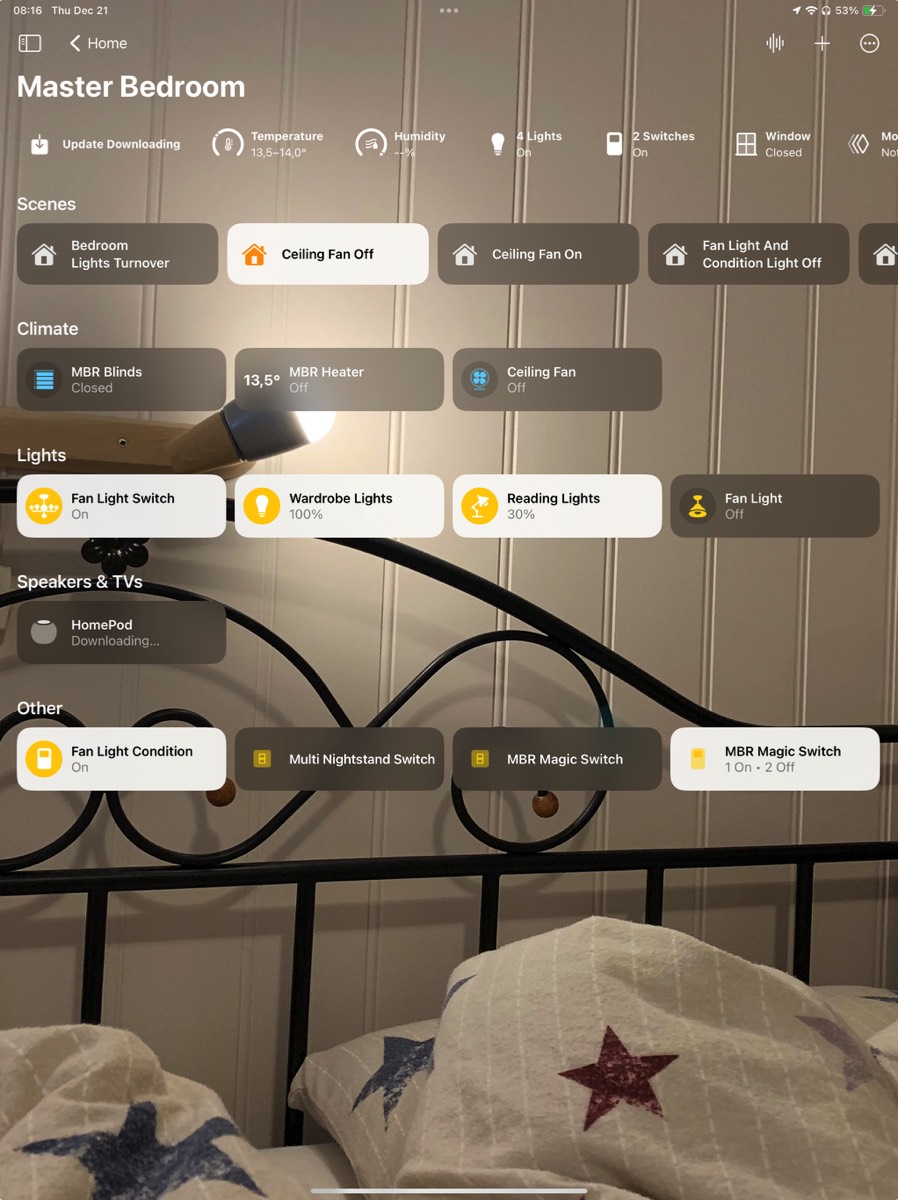Master Bedroom
This room contains solutions for the following systems (notice that on phones, the table might only be displayed in landscape mode):
| System Type | Components |
|---|---|
| Lighting |
|
| Climate Control |
|
| Home Entertainment |
|
| Security and Alarm |
|
| Personal care and health | None |
| Control and Automation |
|
Description of the solutions in this room
The start of the upgrade process for this bedroom came with the launch of the IKEA Trådfri driver, which is Apple Home compatible and can turn on/off as well as dim connected light sources. One of the light sources compatible with the driver is the Norrfly wardrobe light, see picture below. These come in different lengths and have a built-in motion sensor. We have installed three of these, one behind each of three wardrobe sliding doors, and they work exactly as expected. I should mention that I at first tried to «get away» with installing two longer lights, but the motion sensor failed to trigger for all three doors. There is no programming to be done, the light control takes care of it self, but I should also mention that we had a little startup problem. At the same time as we got these wardrobe lights, we also purchased lamps for the living room compatible with the Trådfri driver, and when I programmed these, I inadvertently left them out of the “Good Night” scene. So when my better half retired for the evening after I had already gone to bed, she would resort to asking Siri to turn off all lights. This also turned the Trådfri driver controlling the wardrobe lights off, and the next time we opened a wardrobe door, the light didn’t come on. It took some head scratching before I figured that out, but it illustrates an aspect of the driver; it appears in Apple Home as a light source that can be turned on/off or dimmed, but if used merely as a power transformer for the type of light like the Norrfly, it should basically be left on constantly and never adjusted. That means that commands to perform some action on all lights also will be performed on such drivers.
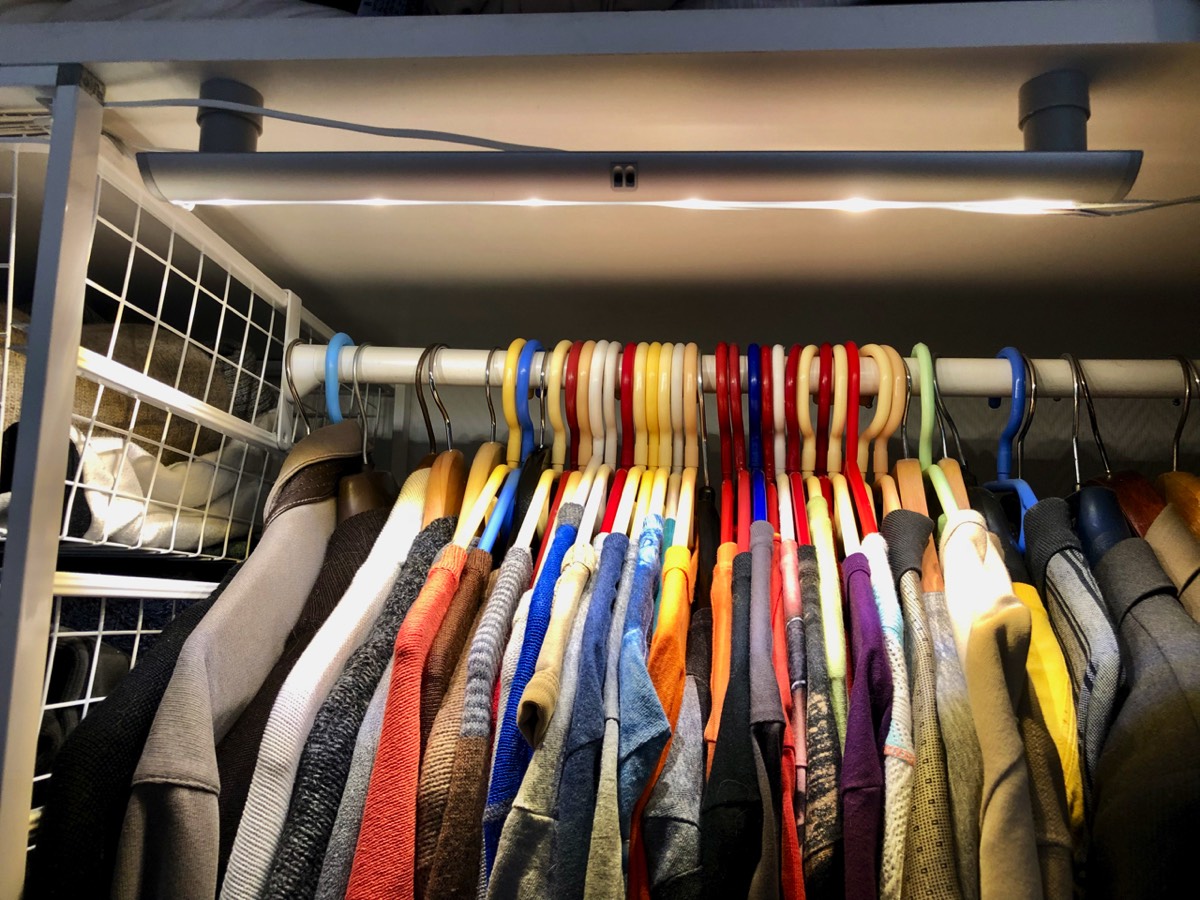
The next step was the ceiling light. In many other rooms of the house, the main light is connected to a motion sensor since it is extremely practical having the light turn on automatically when entering, especially if carrying something that makes it hard to reach the manual switch. In the master bedroom, however, the ceiling light is integrated in the ceiling fan, a relatively old model, where a wall switch turns on/off the whole fan, i.e., both fan and light. The fan has two chains that pulled to respectively turn on/off the light and adjust the speed of the fan, from off and through to three speeds, see picture below.
The ceiling fan with wall switch and chains for controlling the light and fan speed
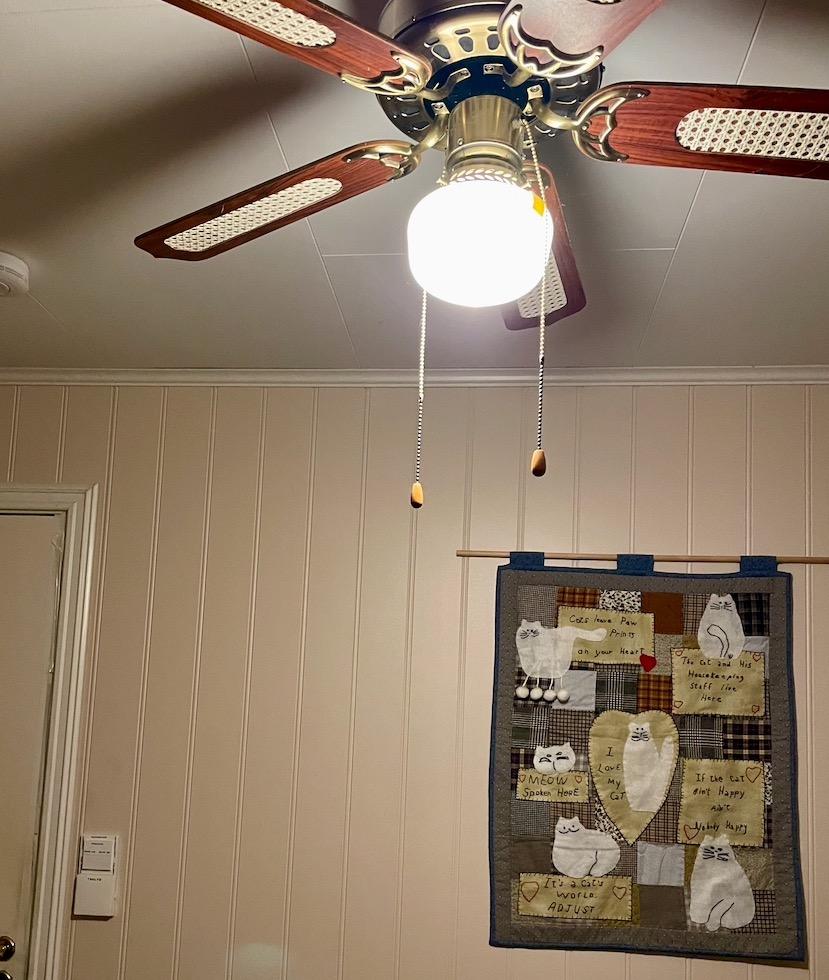
The existing light bulb in the ceiling fan was exchanged for an IKEA Trådfri E14 smart bulb. This is controlled using a Philips Hue motion sensor, see picture below.
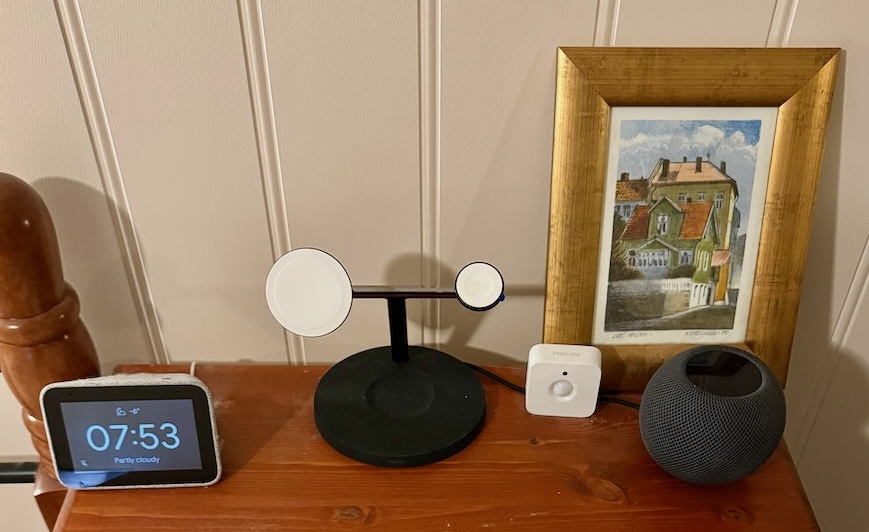
This was for a long programmed so that the light turned on when motion was detected and the time was outside the time of night where we can be expected to be in bed, to avoid having the light turn on when turning in bed during sleep. This type of programming can be done in the Home app, by defining a trigger (motion) and time interval. The disadvantage of this setup was that the time interval where the light should not be turned had to be set with a wide margin, to take into account evenings where someone went early to bed og mornings where someone slept long. This meant that in many cases, we had to use a Philips Hue dimmer switch, installed above the old wall switch, if we wanted to turn on/off the light manually at times where it didn’t turn on automatically (in addition, the remaining two buttons have been programmed to turn the fan on/off manually).
This solution worked fairly well, but eventually we started using a so-called “dummy switch” in Homebridge (through this plugin). This is now the solution here, where a virtual switch is turned off at night when we go to bed and on again in the morning, in addition to being turned on/off at defined times. When motion is detected, the virtual switch is used as criterion for whether to turn on/off the ceiling light.
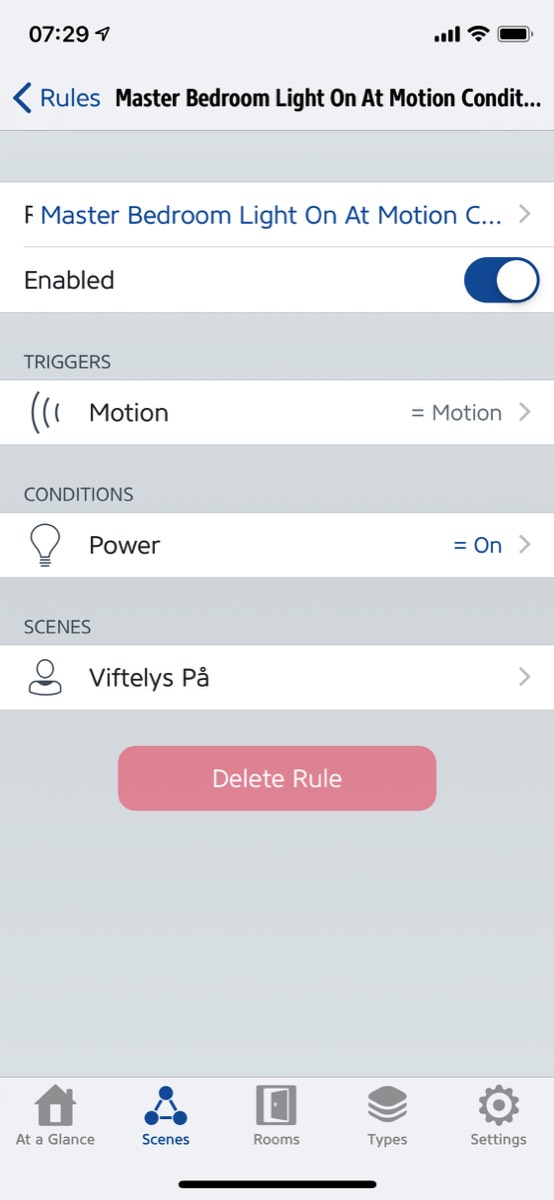
The lamp by the bed had for a long time only traditional bulbs, but in the end also these were replaced by smart bulbs, two IKEA Trådfri E14 smart bulb, partly because it was one of a very few light sources in the house still not «on line» and partly because the switch on the lamp cord is a little hard to find. Now this lamp is controlled by two IKEA Trådfri wireless switches (as far as I can tell sold only in kits with a smart plug), placed on the night stands on either side of the bed, see pictures below. These switches work as other control devices from Trådfri, by only being possible to program in the IKEA app by placing them in the same room as lights to be controlled by it, see screenshot below. Fortunately, in March 2019, it became possible to put two control devices in the same room, so that both switches control both bulbs.
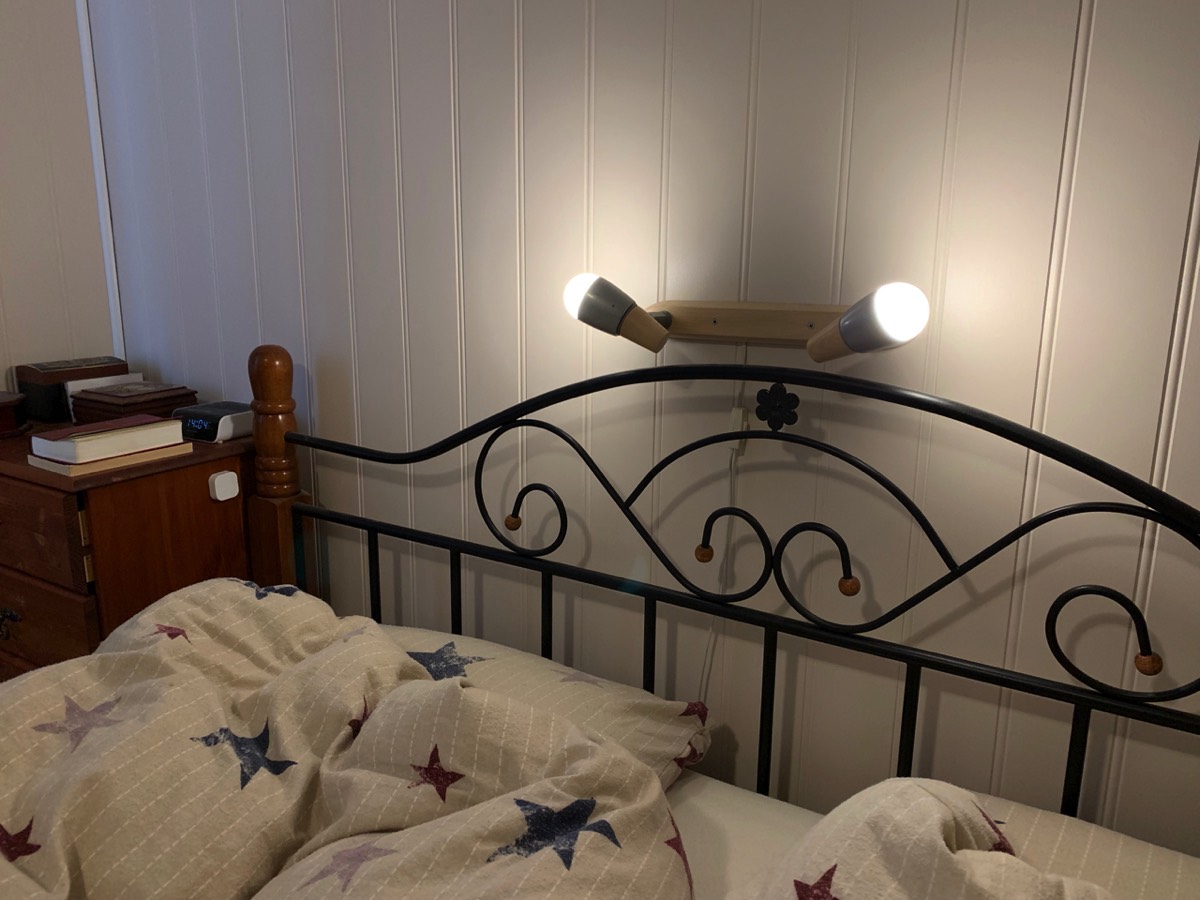
Lamp above the bed with two Trådfri bulbs and a switch on either nightstand
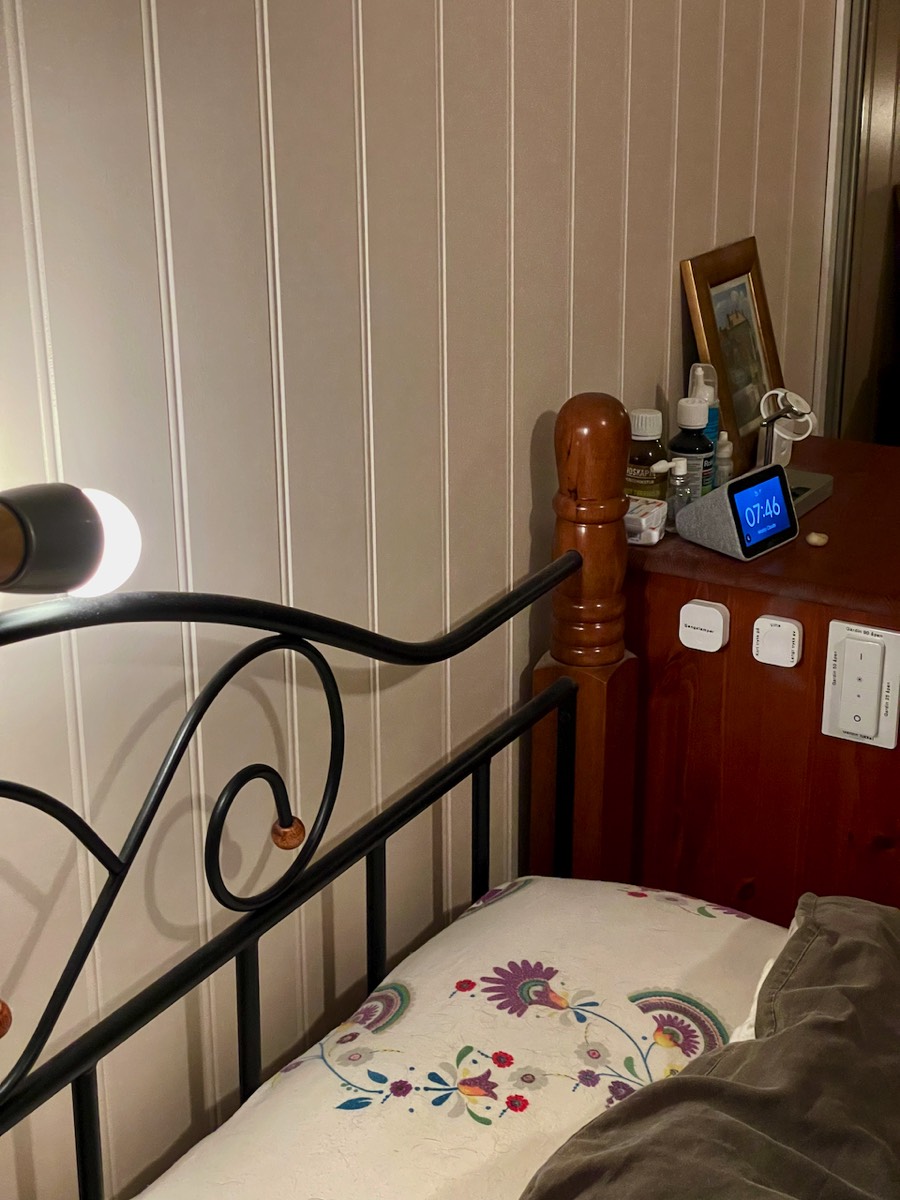
“Programming” of the Trådfri switches and bulbs by placing them in the same room (notice that the master bedroom must be defined as two different rooms, otherwise the switches at the night stands would turn on/off the wardrobe lights and the fan light; this is just one example of how the “programming” options in the IKEA app are fairly limited)
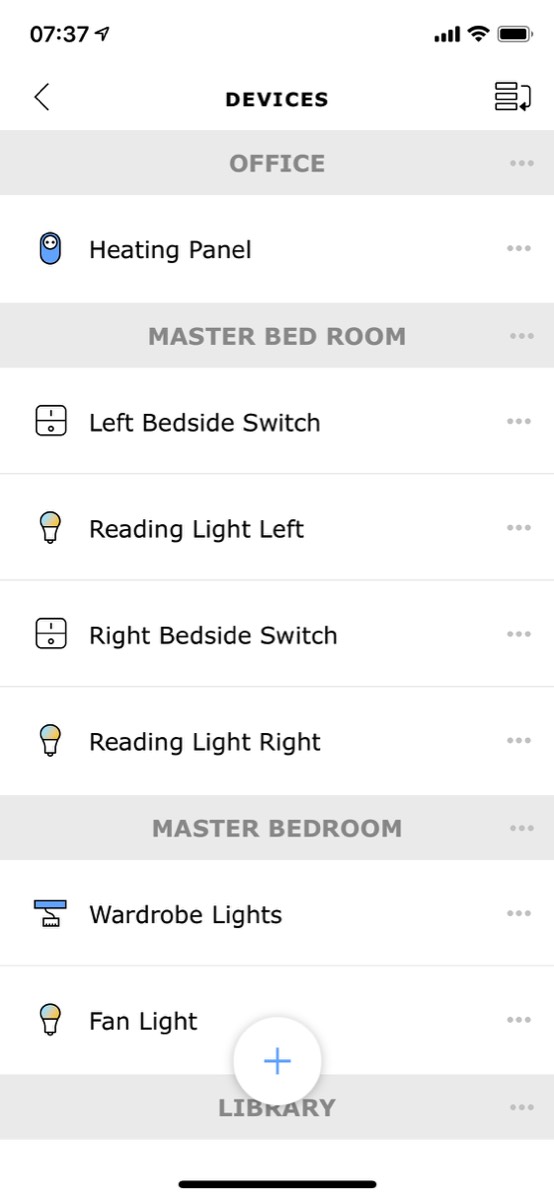
This is another room where we have replaced the old wall switch by a smart version from Aqara, see picture below, this with a LED screen. It is set up so that the “buttons” on the screen do not include the physical circuit controlled by the switch, meaning we avoid someone inadvertently turning off the ceiling light using the wall switch. In addition, the switch allows setting up as many as nine “buttons” so from this panel we can control all the lights, the fan, and the blinds.
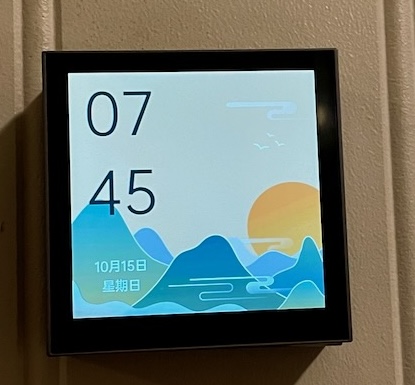
Smart wall switch that controls the ceiling fan and light in the room. To the left, the switch is in screen saver mode (it goes completely black after thirty seconds) and to the right it displays the defined “buttons”
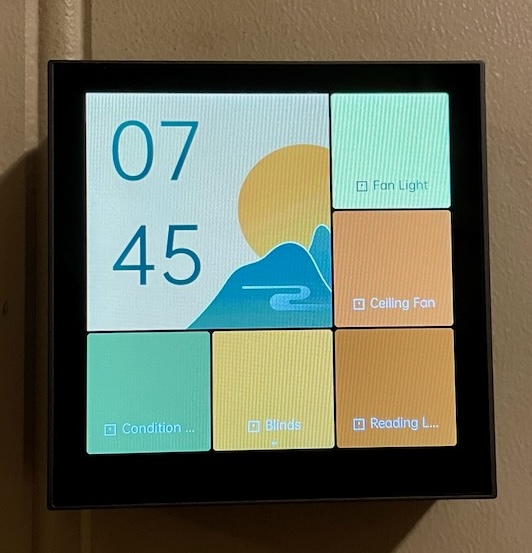
To control the fan, in the end I ended up with a product I had already installed a couple of other places (there to control lights), namely a a Fibaro Single Switch. However, I was partly concerned that the load incurred when the fan starts would be too much for the relay and also partly unsure whether it would be possible to get access to a separate wire to the engine fan. Both turned out to be unfounded. The latter solved itself by unmounting the fan from the ceiling and confirming that there were easily accessible wires for light and fan separately, as well as plenty of space in the connection box for the Fibaro relay. This worked well for a long time, but partly the Fibaro relay started to show some instability (Fibaro blamed this on changes in the Apple Home architecture) and partly it was somewhat annoying that this solution only allowed turning on/off the fan, not adjusting the speed. A Sonoff iFan04 fan controller was therefore installed instead, see picture below. This makes it possible to also adjust the fan speed, both in Apple Home and with a dedicated remote control put on one of the nightstands, see further down.
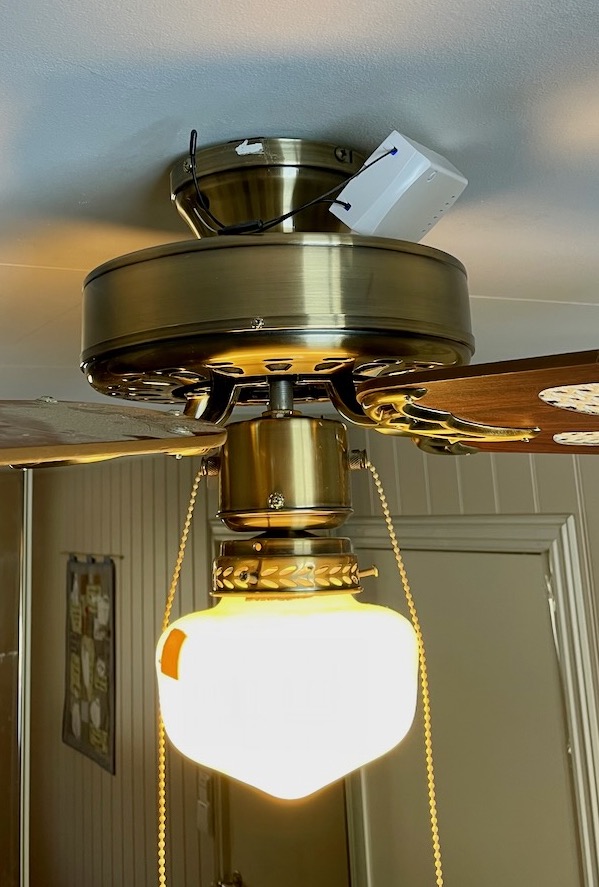
And since the Philips Hue motion sensor also measures temperature (and light brightness), I use its measurements to control the fan. This has been programmed in the Eve app, since it allows routines using both triggers and conditions. It is now set up so that when the temperature exceeds 20 degrees Celsius, the fan is turned on, and correspondingly off again when the temperature drops below 20, see screenshots below.
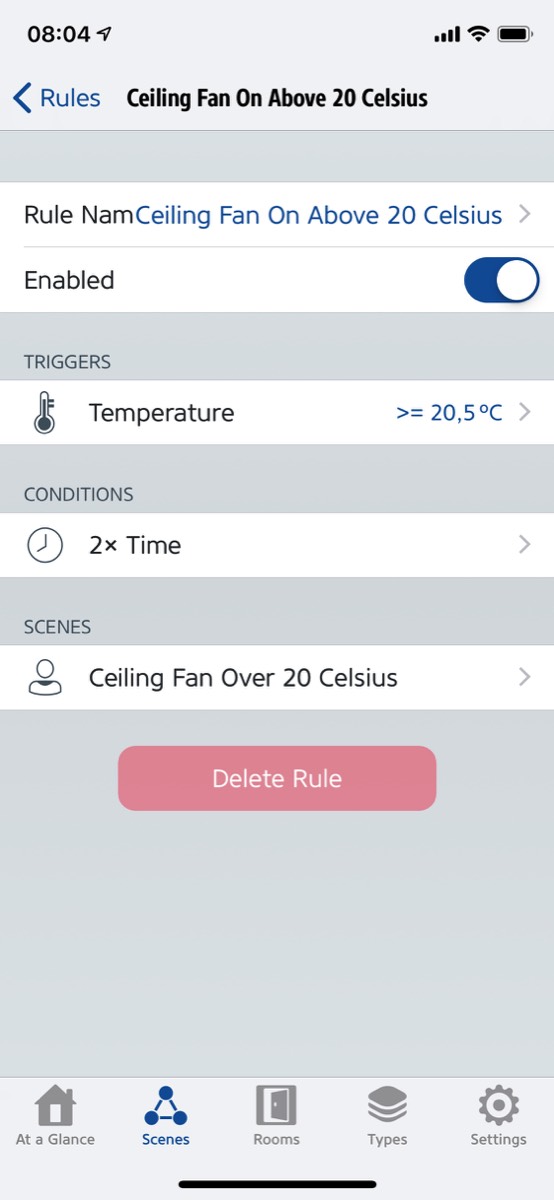
Programming set up in the Eve app, on the left, where the ceiling fan turns on if the temperature, measured by the Hue motion sensor, goes above 20 degrees Celsius and the time is between 21:00 and 07:00 (to avoid running the fan during the day when we are not in the room)
In the Home app, on the right, these conditions are shown even if they cannot be set up in this app
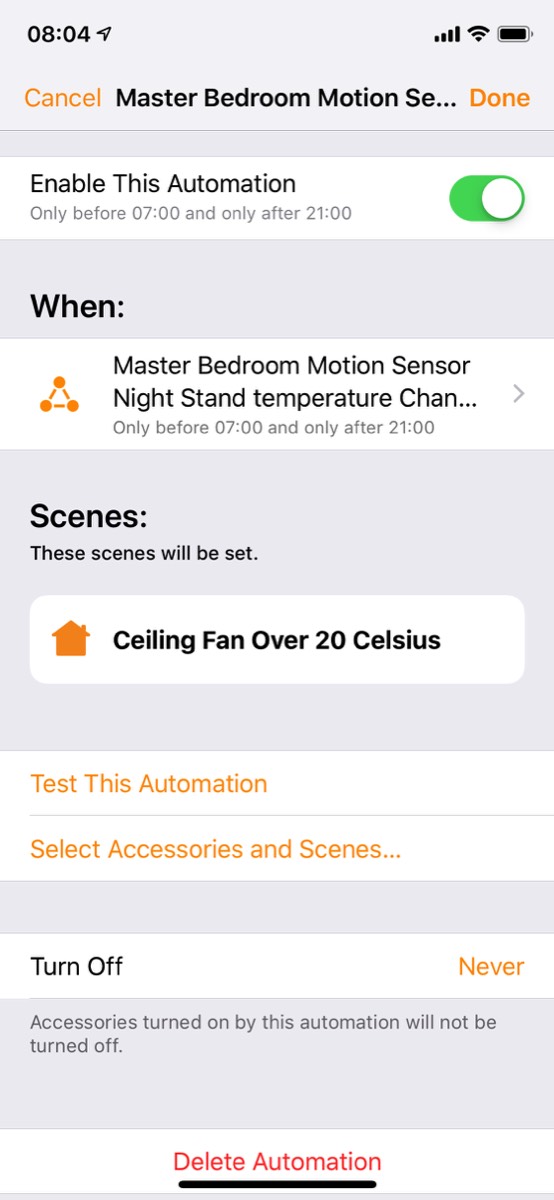
Corresponding rule turns the fan off if the condition is met that it was one and the temperature falls below 20 degrees (also this has been programmed in the Eve app)
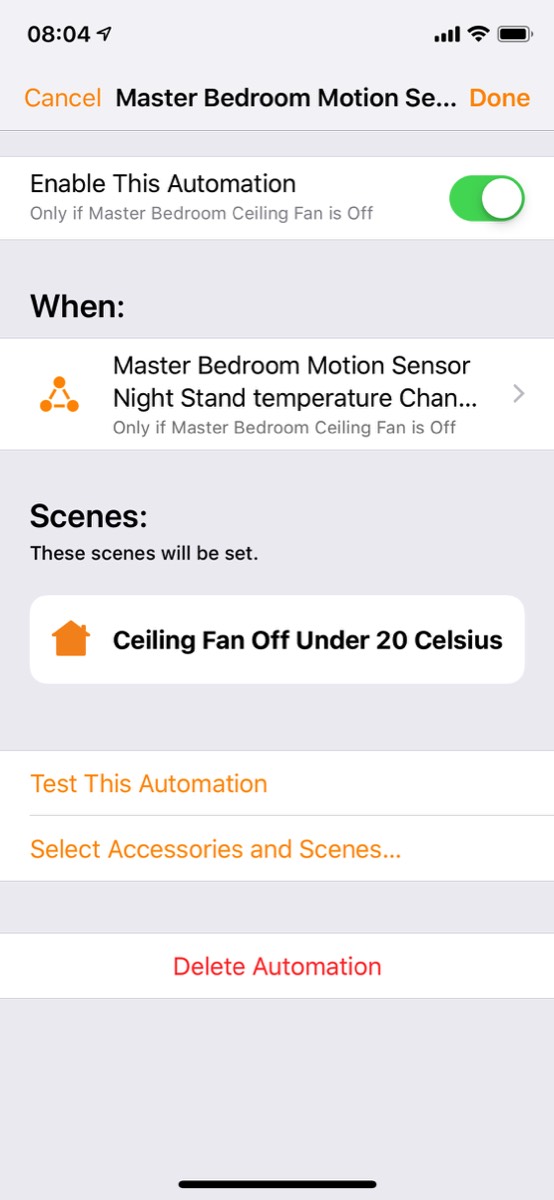
After the spring of the manual blinds suddenly broke, I saw no reason to replace it with another manual one. Instead, yet another set of IKEA Fyrtur blinds was installed, see picture below. As elsewhere in the house, this work flawlessly, with the little remote control placed on one of the night stands.
As the seasons changed, we realized that we only used a few “settings” in terms of how closed the blinds were. When an Aqara Oppe smart wireless switch was taken out of service in a different room, it was programmed with these “closed settings” for each of the four buttons (as well as a couple of other light scenes), and the switch placed on the other night stand, see picture below. This makes it much easier to achieve the desired position of the blinds.
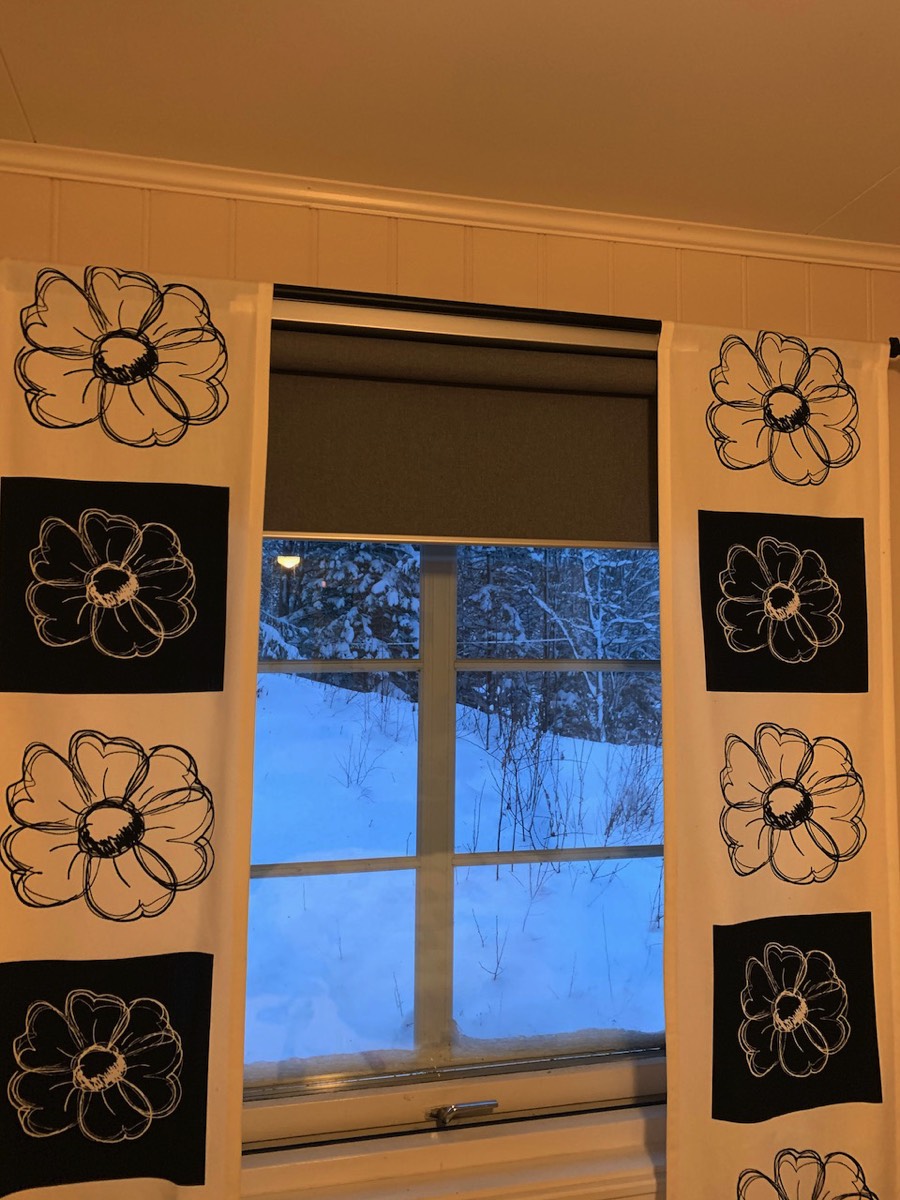
IKEA Fyrtur blinds to the left and Aqara and other switches to the right
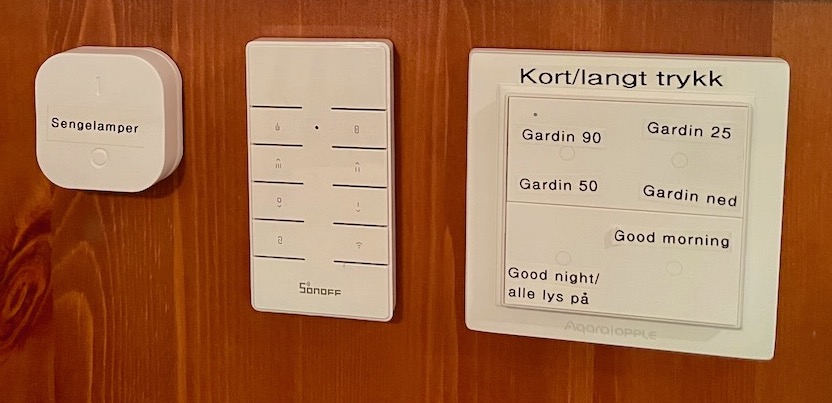
After we got a dog, with rather thin coat, who likes going to bed in the master bedroom early in the evening, we realized that during winter, it would often be on the chilly side, even with the window closed. We therefore installed a Mill panel heater here, see picture below, of a similar type to one we had previously installed in the office (see more about Mill and the functionality of these smart heaters there). Also this has been combined with an Aqara window sensor and programmed so that it turns off when the window is opened and on again when the window is closed again. Otherwise if follows the temperature program defined in the Mill app.
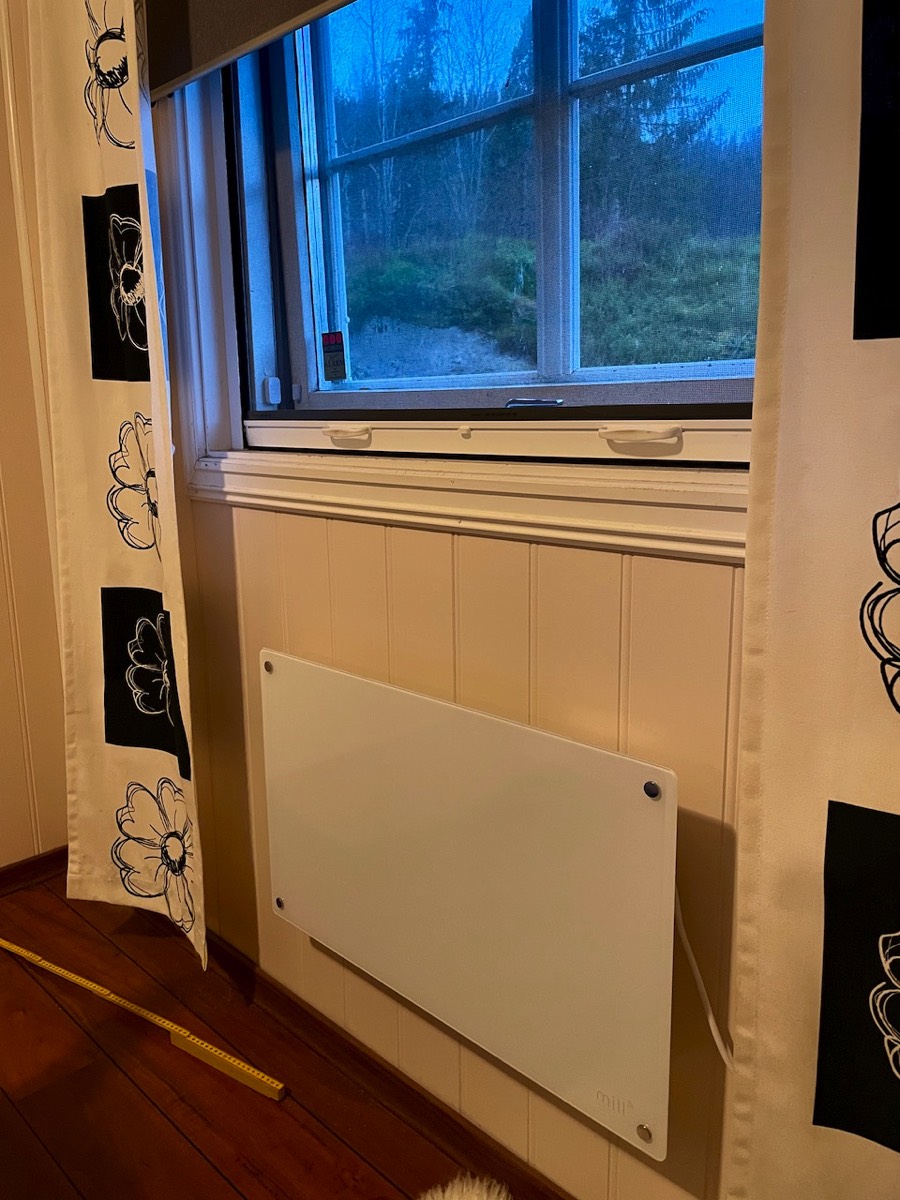
Also in this room, there is a Verisure smoke detector, see picture below, and has been mentioned under other rooms, measurements of temperature and humidity are brought into Apple Home via Homebridge.
Verisure smoke detector
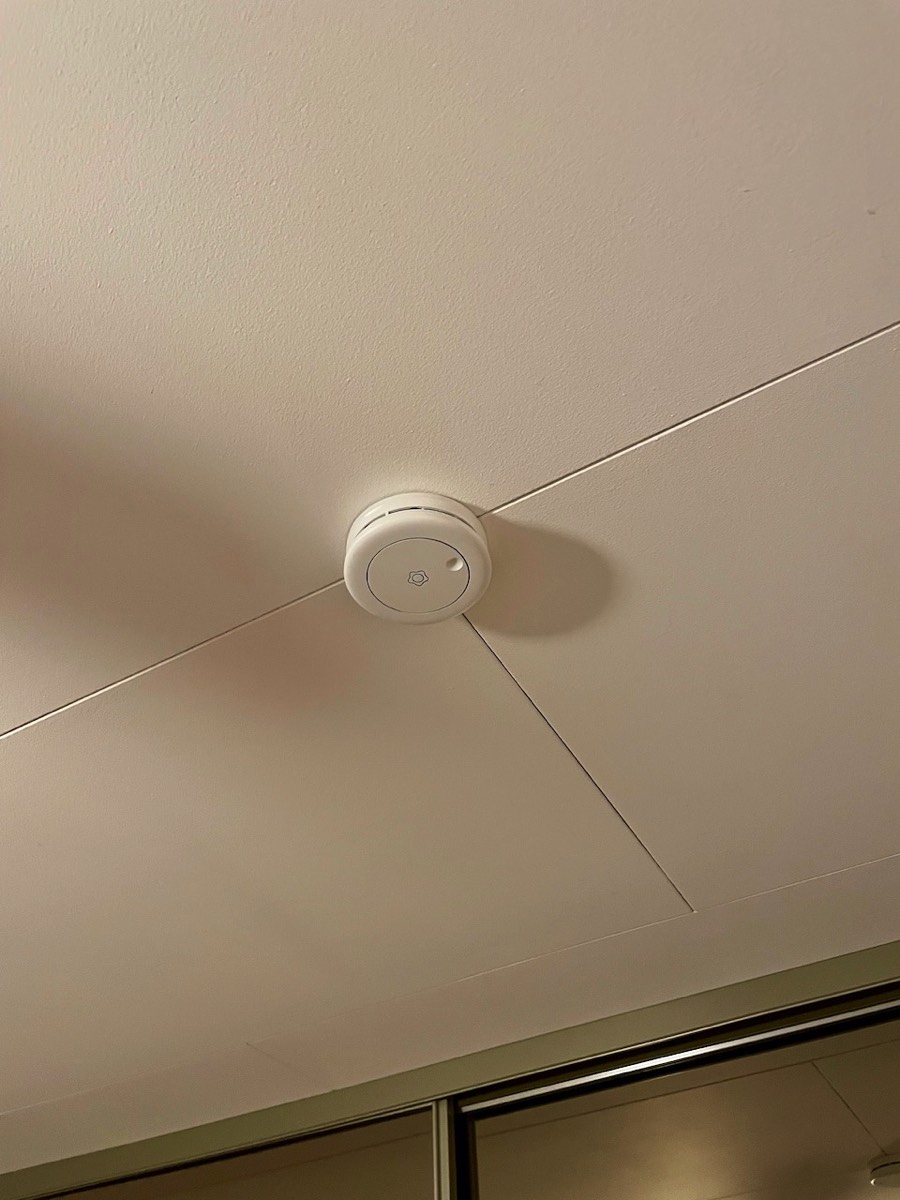
A complete overview of the devices in the room is shown in the screenshot below.
